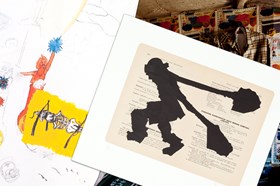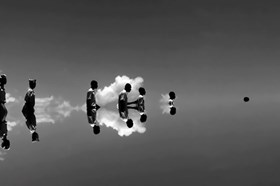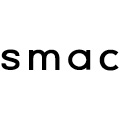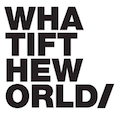artthrob artbio
Wilhelm Saayman
By Chad Rossouw
Wilhelm Saayman
SRVVL F TH FTTST,
2011.
Oil paint, pencil on paper
.
Wilhelm Saayman’s work is both bleakly funny and emotionally raw. This breadth of expression, from humourous to moving, is produced with a simple combination of drawing and text that is difficult to categorise.
In 2008, the well-known editor of McSweeney’s, Dave Eggers, curated a show called 'Lots of Things Like This'. The show was premised on the idea that there was an unnamed genre of art comprised of the following elements:
1. An image
2. Some words (usually referring to the image)
3. A sense of humour
Finding deep roots in the work of Goya, and more contemporary origins in Raymond Pettibon, Eggers pulled out a whole array of works fitting this genre and named it a circular 'Things Like This'.
Eggers, unfortunately, wrote a really stupid essay to accompany the show, marked by a cloyingly familiar tone and a refusal to engage in critical thought. The latter, however, inadvertently hits on a key point in things like this. Not that the work holds no critical thought, but rather that it contains an interpretative gap, a stretch of white space between image and text, a cognitive dislocation. It is essentially a drawing’s equivalent of comic timing. It is as difficult to describe as a Simpson’s episode without utterly failing to be funny. Wilhelm Saayman’s work fits into this category, it is 'a thing like this'. On the other hand, like all good art, it transcends the genre.
Modus Operandi
Saayman’s work generally takes the form of drawings and watercolours. These are marked by a naïve line, playful colour and scrawling text. The drawings generally work around a sense of ridiculous and thwarted masculinity, while also incorporating suburban lethargy, personal revelations and ultra-violence. The drawings are often character-driven, producing a truncated narrative and instant recognition of human foible and failure.
art events calendar
VIEW FULL CALENDARbuy art prints
edition of 60: R70,000.00
About Editions for ArtThrob
Outstanding prints by top South African artists. Your chance to purchase SA art at affordable prices.
FIND OUT MORE Editions for artthrobWhile words like tragedy, comedy, irony, melancholy and naïvety come to mind when describing these characters – and the drawings themselves – perhaps the closest term is 'bathos' in the traditional sense of the term; a slide from the sublime into the everyday, carrying connotations in contemporary uses of something so pathetic as to be funny. Both these meanings are produced here by the juxtaposition of childlikeness in the rendering of the drawings, colour and text, with a world-weary adultness, full of emotional blackness and cynicism. The innocence of the former punctures the latter, revealing a raw-hearted sincerity. They are funny, and revealing, which makes a powerful combination.
In his most recent show, 'Th Wrng Plls' at Gallery AOP in Johannesburg, Saayman has moved into oil paint on paper, adding a more painterly element to the drawings. These works expand the previously mentioned naïve register, allowing a new depth of formal exploration. In particular, the text in these new images has receded to become a formally smaller part of the whole, and Saayman has adopted a new strategy of leaving vowels out of titles. Thus, a new ambiguity emerges from titles like TH WRNG PLLS, GD SPD and SRVVL F TH FTTST.
Many of the works on this show are also larger than Saayman has exhibited till now, establishing a dialogue with painters like Basquiat, Penck, Dubuffet and Ensor in their collision of tragic and disturbing ideas with banal and faux-childlike imagery.
Artist's Statement
'I create work that speaks about the horror of urban existence, albeit with humour and irony. I look for magic in the mundane and I don’t shy away from questions of mortality and morality. The results are funny, violent, disturbing, surreal, playful and startling. My paintings and drawings recall sketches found in the back of teenagers’ school exercise books, film storyboards, graphic novels and the etchings of George Grosz and the Chapman Brothers. At once sensitively artful and apparently artless, these works give vent to the private thoughts that polite society compels us not to speak'.
'The figures, or characters as I would like to call them, are influenced by graphic novels. The same characters appear in different works, sometimes shifting roles and making one question whether it is their morality that changes depending on their circumstances, or not. They tell the stories of outsiders, vagrant characters and transient beings. These figures are also often cropped in a manner that is more akin to the processes one associates with storyboards and with photography. There is darkness in the figures of these new works, but humour too, however wry or grim. There is still a lot of blood in these works but it seems as if the carnage is more vibrant, orchestrated than before. In my stories it is difficult to tell whether the good guys are really good or merely indulging their darker sides'.
What others have said
An epigram by the French writer Sebastien Chamfort offers a useful entrée into Saayman's bleakly funny pencil drawings: 'Better on your arse than on your feet, flat on your back than either, dead than the lot'. Financial Mail
'Despite most works' reduction to a two-punch of image and text, Saayman says he avoids making works that operate like one-liners; no mean feat for an artist with such a propensity for the comedic. Rather, his humour is tinged with a sadness and a world-weariness that enables these images to transcend mere entertainment. In particular, his twinning of violent images with incongruous song titles or lyrics ripples out into incisive social critique. The work We've only just begun pairs these lyrics from the sappiest of '70s MOR popsters The Carpenters with a bloodied pile of corpses. The picture is drawn in the mode of a naïve yet bloodthirsty child; this communicates the extent to which global aggression has been internalised in our culture, and lends the song words an ominous tone. This reading of the work is augmented by a similar image (and one that Siebrits has chosen to curate quite close to We've only just begun), called School. It is essentially a re-enactment of an incident from Saayman's childhood: he was drawing a scene of war and destruction when his teacher became incensed by the work, took it away unfinished and told Saayman to stand in the corner. The stylistic traits of these two works suggest that the artist is playing a complex game of shifting subjectivity back to that of the child. The result is a play-off between childhood phenomenological wonder and acerbic adult wit'. Michael Smith
'Much of Saayman's work is cynical, violent, tragic and disturbing in a way that translates his purposefully bad pencil crayon, pen and watercolour drawing into something painfully sad and affectingly schizophrenic. A couple boxes, faces bleeding under the banner, "You're my Baby". A girl with bloodied hands stares out below the text, "she never talked about what happened". Red pencil oozes from the head of a dead girl lying next to her Nikes illustrating, "the girl who always ignored me was knocked down by a bus". There is a lot of blood, a lot of death and a lot of dirty sexual references. Combined with the text pieces like You're Just a Blowjob Waiting to Happen and I Liked You More When I Didn't Know You, his work is really, honestly funny. Except not really'. Linda Stupart
'Maar op groter skaal is sy jongste werk dalk nog meer makaber: Dit is bevolk deur zombies, spokies, duiwelagtiges en grynsende figure waarmee hy gestalte gee aan ’n post-koloniale nagmerrie. AK-47’s kom dikwels voor as ’n soort fetisj en in een werk ratel ’n konvooi van klein militêre voertuie oor ’n horison. Makaber is die werk wel, maar dis die strokiesagtigheid wat daaraan ’n soort respyt gee en die kyker as’t ware dieper intrek in die donker kant van selfs oënskynlik gawe karakters. Niks is immers waarna dit lyk nie'. Johan Myburg
Currently
Saayman has a show at Gallery Art on Paper called 'The Wrong Pills'
Next up
Says Saayman: 'In the last year I've shifted from drawing to oil painting and also started producing larger format works. This a major progression and one that I'm relishing. Painting is an incredible joy, being able to convey narratives in this manner is liberating to me. I would also like to have more solo shows, both here and internationally'.
Biography
Willie Saayman was born in Robertson, Western Cape in 1962 and attended Jan van Riebeeck High School in Cape Town. His first solo exhibition was mounted at the Association for Visual Arts, Cape Town in 1990. At the time, Iziko South African National Gallery acquired a video work of his, Channel Zero – An Evening’s Viewing. He had solo exhibitions in Johannesburg and Cape Town in 1992, 1999 and in 2007. He was part of the seminal group drawing exhibition, Draw Links at GALLERY AOP in October 2010 and some of his drawings from this show were acquired by the Johannesburg Art Gallery. Willie Saayman lives in Johannesburg and edits television commercials for a living.



















